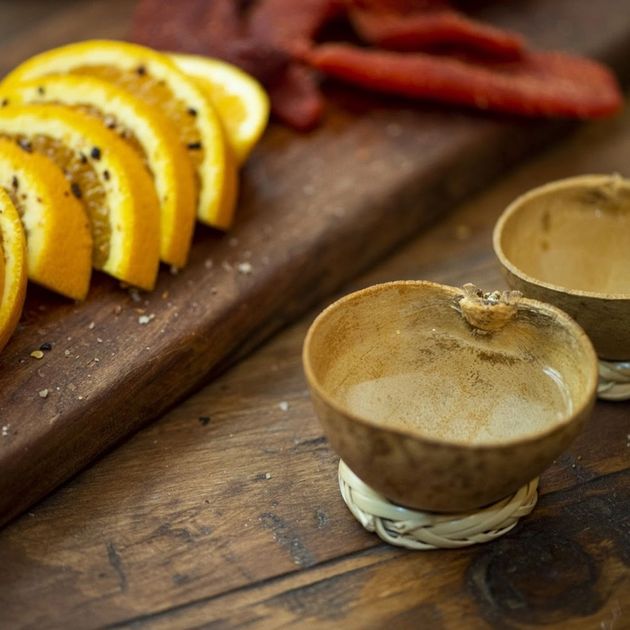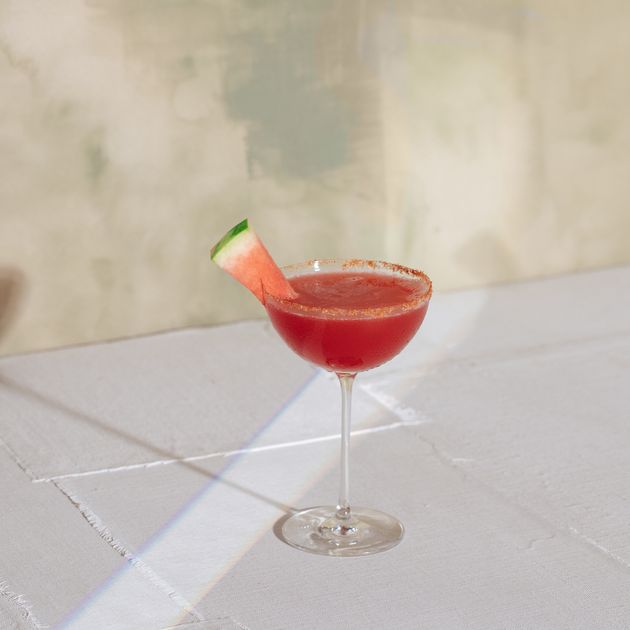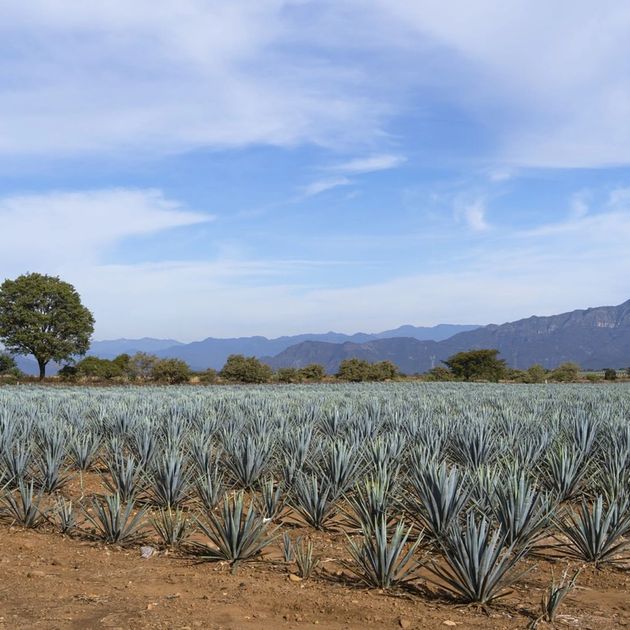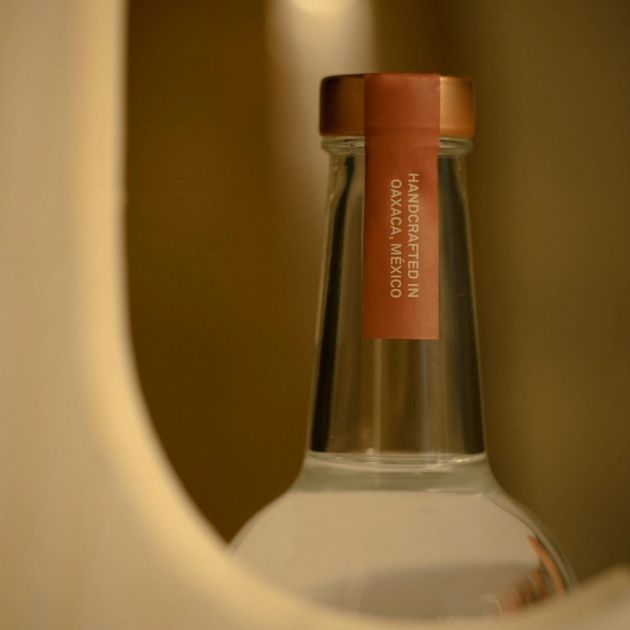We have a hunch that many people feel shy asking questions about Mezcal because, as adults, we feel we should already know about all of the liquors. Alternatively, maybe you think if you don’t know a lot about it by this point, it probably isn’t worth knowing or caring about.
Wrong and wrong. For one, you should always ask questions—nothing wrong with that. And two, Mezcal is absolutely worth knowing AND caring about, thank you very much. Mezcal is unique and special in its own way, even if it wasn’t your household’s staple.
The fact that Mezcal isn’t as mainstream as vodka or tequila (yet) makes it even cooler to know about. Picture this: you’re at the bar with some friends. All eyes are wandering about the menu, trying to decide on the first drink of the night. You—being the wise, well-rounded, and worldly person you are—see Mezcal on the menu and remember this article you read way back when. You share your knowledge of all things Mezcal with the group; everyone is thrilled to hear about something other than the weather or the pandemic. But more than anything, they’re intrigued about this Mexican agave-based spirit you speak of.
Long story short, everyone ends up ordering a Mezcal drink, and it’s one of the best nights of your life. You’re welcome.
Without further ado, let’s get to know the magic of Mezcal. By the end of this, you’ll be an absolute Mezcal expert, well-equipped to go out there and find the best Mezcal there is. We’ll cheers to that.
The Rule of…Twos?
We strongly believe in the rule of threes, but today we’re shaking things up a little bit. We’re going to play around with a rule of two: two factors that play into making different Mezcal varieties.
Oh, wait—you’re not familiar with our rule of threes? Sorry about that. Allow us to explain.
Rule of three #1: Water, agave, and love.
Rule of three #2: Mezcal Rosaluna, lime juice, and agave syrup.
Rule #1 lists the ingredients that go into our Mezcal Rosaluna. Yep, there are only three: water, agave, and lots of love. It’s all you need.
Rule #2 is also an ingredient list, except for our Rule of Three Margarita. We love Mezcal for its artful simplicity, and our take on the classic Mexican margarita is no different.
This wasn’t an original Rosaluna rule of three, but now that we’re thinking about it, we have one more…
Rule of three #3: Earthy agave, complex aroma, and a smooth finish.
Our Mezcal Rosaluna brings an experience of three unique, complex, and exciting flavor profiles. Earthy Agave: roasted agave hearts and their delicious caramel notes lead the way, while spices like ginger and cinnamon are woven throughout. Complex Aroma: with notes of citrus, tropical fruits, pineapple, and pear, it’s an experience of bright notes everyone enjoys. Smooth Finish: leading with a hint of agave smoke, Mezcal Rosaluna finishes with subtle layers of sweet fruit and baking spices. Mmm…
Okay, it’s time to get back to the rule of two. Two factors that affect Mezcal: the type of agave used and the method behind the magic.
There’s a Method to the Magic
There are three methods to choose from when making Mezcal: standard, artesanal, and ancestral.
Standard Mezcal
The standard method, or industrial method, adheres to the bare minimum requirements for certified Mezcal. This method allows for the use of some specific, newer tools that accelerate and ease the process. Some of these (otherwise prohibited) tools include shredders for the milling process and autoclaves (pressure cookers) for the cooking.
The standard method doesn’t really give us authentic Mezcal, but it’s more efficient and thus facilitates industrial-scale production.
Wondering how to spot industrial Mezcal? Industrial Mezcal may show an amber color (or variation of such). This indicates the liquor has been aged or contains artificial coloring (yuck). Unfortunately, this likely means the authentic flavor and delicate aroma have also been destroyed during production. Sad.
Mezcal Artesanal
The artesanal method brings us back to tradition. This method prohibits most of the newer tools and techniques that industrial production allows, though shredders for milling and stainless steel tanks for fermentation are two exceptions.
Artesanal Mezcal is probably the all-around best choice for selecting a Mezcal; it achieves high standards of authenticity and quality without the steep price premium of ancestral-certified Mezcals.
With this method, pit ovens or elevated stone ovens are used for roasting, and mills or mallets are used for milling. Fermentation is done in earthen tanks, and the maguey fibers are often incorporated (the industrial method omits the maguey for the sake of speed and cost savings). Maguey fibers are key for creating the smoky flavor in Mezcal, so this is a significant difference.
Finally, artesanal Mezcal is distilled using direct fire on copper stills or clay pots, making for a pure and refined final product. Distillation is where the magic happens. This patient process separates the water from the alcohol and captures the alcohol into the final spirit. Mezcal Rosaluna is double distilled… just saying.
Mezcal Ancestral
Ancestral Mezcal follows the strictest rules, and of course, this will always be reflected in its pricing.
Honestly, there often isn’t that much of a difference between a good quality artesanal Mezcal and a regular ancestral Mezcal. The differences are that ancestral Mezcal only permits pit ovens, prohibits shredders, and requires the use of maguey fibers. The thing is, however, the majority of artesanal Mezcals still use pit ovens rather than elevated ovens, still choose mills or mallets rather than shredders, and still opt to include the maguey fibers.
Our suggestion? Find a great artesanal Mezcal.
Agave All the Way
The other variable affecting Mezcal is the type of agave that is used. Did you know there are over 200 species of agave? Of these 200, roughly 30 of them can be used to make Mezcal, but there are really only five you need to know about.
Espadín for the Win
Espadín is by far the most common agave, accounting for approximately 90% of all Mezcal production. But don’t let this fool you into thinking that all these Mezcals will taste the same—espadín is hugely versatile and picks up on many subtle differences, including where it was grown and how it was processed.
Espadín is naturally less fibrous than other agaves, which eases its breakdown after roasting (AKA better release of flavors and aromas). Espadín is also an easier agave to cultivate and has a relatively high inulin content, allowing for the most efficient alcohol production during distillation. Mezcal Rosaluna is made with 8-year-old espadín agave and double distilled… we’ll let you connect the dots on that one.
Tobalá
Tobalá is one of the more rare agave varieties, sometimes referred to as the “king of Mezcals” (we’re not sure why—we think espadín tastes the best).
Tobalá agave prefers high altitudes and shady, rocky soil. Tobalá doesn’t reproduce the same way most agaves do (by dropping its leaves after reaching maturity) and instead relies on bats and birds to spread its seeds. Tobalá also takes much longer than other agaves to mature (10 to 15 years) and produces a relatively low inulin content; these attributes contribute to tobalá Mezcals being very expensive.
Tepeztate
Tepeztate agave thrives in Southern Mexico's hotter, more desert-like climates and is known for creating intense, spicy Mezcals. And when we say intense and spicy, we mean it; think “men’s cologne store.”
When tepeztate agaves finally bloom after 25-30 years, they flower into big, bright yellow flowers right at the tip of their stems. Because of its much longer maturity time, tepeztate Mezcals are not nearly as readily available as other varieties.
Tobaziche
Tobaziche is a confusing one because, on top of having several different names, this species can also look and taste very different depending on where it’s growing. Despite this minor annoyance and inconsistency, tobaziche creates one of the more savory, herbaceous Mezcals. Perhaps surprisingly, tobaziche Mezcals are also some of the most expensive on the market.
Arroqueño
Arroqueño is another species with striking visual appeal; leaves can span as wide as 10 feet. Of course, the cooler the plant looks, the longer it usually takes to mature, and arroqueño is no different with a time to maturity of 25 years. Arroqueño Mezcals tend to be a unique mix of floral, vegetal, bitter chocolate essences.
Mezcal Lovers, Attention Please!
Meet Rosaluna. She’s made with Espadín agave, using an artesanal method of production. She’s everything you could hope for in a Mezcal and more.
Rosaluna comes from the world’s “Capital of Mezcal,” what else do we need to say? Our Mezcal Rosaluna is handmade by a sister and brother duo whose family has been lovingly creating the spirit for over six generations. It’s more than our job—it’s our craft.
We’re also 100% vertically integrated. This means we grow, farm, ferment, and distill our own agave from start to finish. We also pride ourselves in keeping our process sustainable: We rest the field for 1-2 years after harvesting the agaves to allow our soil to restore itself. We use natural pollination. We reuse the fibers and the fermented water from our Mezcal-making process as fertilizer for our agave plantations. And last but not least: we don’t use electricity for cultivation or production.
Extra time, effort, and love go into every batch of Mezcal Rosaluna. What makes all this extra work worth it? You can taste the magic in every sip.
Sources:
When it comes to agave, the old ways make better mezcal, tequila | Chicago Tribune







